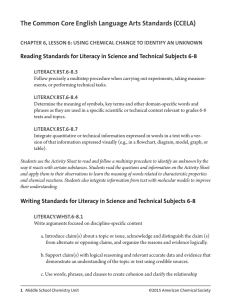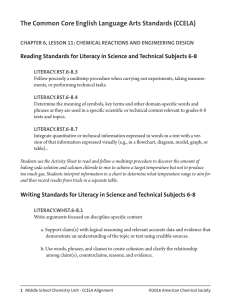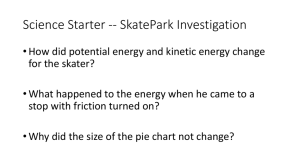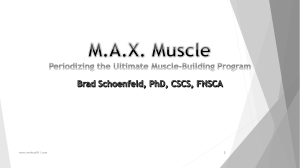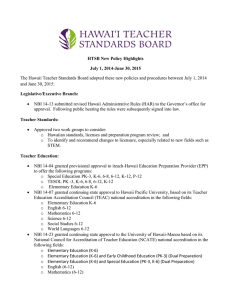7_insert_2a_Baggie Reactions Lesson Outline.docx
advertisement
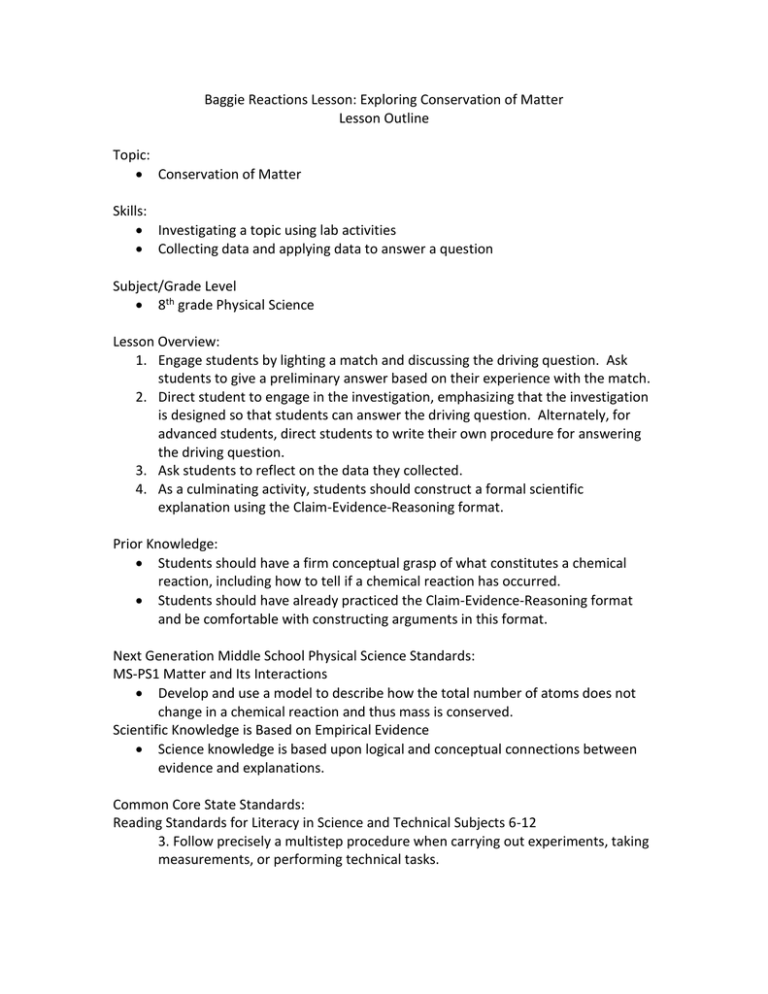
Baggie Reactions Lesson: Exploring Conservation of Matter Lesson Outline Topic: Conservation of Matter Skills: Investigating a topic using lab activities Collecting data and applying data to answer a question Subject/Grade Level 8th grade Physical Science Lesson Overview: 1. Engage students by lighting a match and discussing the driving question. Ask students to give a preliminary answer based on their experience with the match. 2. Direct student to engage in the investigation, emphasizing that the investigation is designed so that students can answer the driving question. Alternately, for advanced students, direct students to write their own procedure for answering the driving question. 3. Ask students to reflect on the data they collected. 4. As a culminating activity, students should construct a formal scientific explanation using the Claim-Evidence-Reasoning format. Prior Knowledge: Students should have a firm conceptual grasp of what constitutes a chemical reaction, including how to tell if a chemical reaction has occurred. Students should have already practiced the Claim-Evidence-Reasoning format and be comfortable with constructing arguments in this format. Next Generation Middle School Physical Science Standards: MS-PS1 Matter and Its Interactions Develop and use a model to describe how the total number of atoms does not change in a chemical reaction and thus mass is conserved. Scientific Knowledge is Based on Empirical Evidence Science knowledge is based upon logical and conceptual connections between evidence and explanations. Common Core State Standards: Reading Standards for Literacy in Science and Technical Subjects 6-12 3. Follow precisely a multistep procedure when carrying out experiments, taking measurements, or performing technical tasks. Writing Standards for Literacy in History/Social Sciences, Science, and Technical Subjects 6-12 1. b. Support claim(s) with logical reasoning and relevant, accurate data and evidence that demonstrate an understanding of the topic or text, using credible sources. c. Use words, phrases, and clauses to create cohesion and clarify the relationships among claim(s), counterclaims, reasons, and evidence. d. Establish and maintain a formal style.


